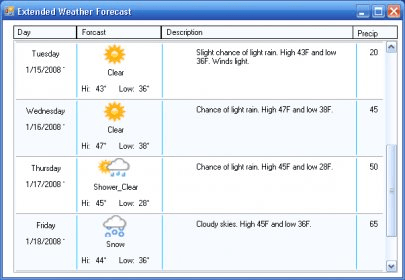

- Microsoft visual basic power pack 9.0.0.0 driver#
- Microsoft visual basic power pack 9.0.0.0 software#
- Microsoft visual basic power pack 9.0.0.0 code#
- Microsoft visual basic power pack 9.0.0.0 Pc#
- Microsoft visual basic power pack 9.0.0.0 plus#
Microsoft announced in March 2007 that Visual FoxPro 9.0 would be the last version of the software. VFP end-of-life support and continued use But it maintained VFP as a stand-alone database development platform and didn't create a. Microsoft described Visual FoxPro and Visual Studio as complimentary technologies that were compatible in some areas, such as support for XML. NET framework.ĭespite the Sedna add-ons and the inclusion of Visual in its name, Microsoft VFP wasn't part of either Visual Studio or. The Sedna pack included several features for extending VFP 9.0's integration with SQL Server, Visual Studio and elements of the Microsoft. It stopped development work on the database after making Visual FoxPro 9.0 Service Pack 2 (SP2) available in October 2007, as well as issuing a 9.0 add-on pack resulting from a project code-named Sedna in January 2008. Microsoft released five more versions from 1996 to 2004, skipping version 4.0 and going right to 5.0, and ending with Visual FoxPro 9.0. The product's name was changed to Microsoft Visual FoxPro when the next major version, VFP 3.0, was released in 1995. In early 1993, Microsoft shipped the first Windows version of the software, which previously ran on MS-DOS, Mac and Unix systems.

Microsoft visual basic power pack 9.0.0.0 software#
Microsoft bought Fox Software in 1992, one year after the latter released a FoxPro 2.0 update. Visual FoxPro history and versionsįoxBASE was initially developed by the former Fox Software, which changed the technology's name to FoxPro in 1989.
Microsoft visual basic power pack 9.0.0.0 driver#
The Visual FoxPro ODBC driver also enables developers to use the VFP database as the data store for applications written in C, Microsoft Visual C++ and Microsoft Visual Basic. In addition, VFP includes an Open Database Connectivity (ODBC) driver, which enables data in Visual FoxPro to be queried and updated from Excel, Word and Microsoft Access via an ODBC interface. Visual FoxPro supports Microsoft's SOAP Toolkit, another discontinued, but still downloadable technology that enables applications to connect to XML web services via the Simple Object Access Protocol (SOAP).
Microsoft visual basic power pack 9.0.0.0 code#
It also offers productivity tools and features designed to further simplify the process of developing, maintaining and reusing code for example, user forms that can be docked to applications and the ability to save system properties and custom user interface settings for later use.
Microsoft visual basic power pack 9.0.0.0 plus#
The VFP platform bundles together tools for organizing database tables, querying data and programming end-user applications, plus predefined class libraries with foundational elements that can be added to applications. Despite the tight coupling, the built-in engine can be supplanted by SQL Server if users want more robust security, reliability, replication and other database features. In fact, use of the Visual FoxPro database isn't required as part of VFP applications. Microsoft positioned VFP as a set of developer tools, not a stand-alone database management system (DBMS) like SQL Server.

Key Visual FoxPro featuresĪffectionately referred to by users as the Fox, Visual FoxPro includes an object-oriented programming language and a database engine that are tightly coupled together. Later, under Microsoft's ownership, VFP evolved from a procedural language to an object-oriented one, supporting the development of 32-bit applications, code reuse and XML web services.
Microsoft visual basic power pack 9.0.0.0 Pc#
In the heyday of PC databases, the FoxPro line competed primarily with dBase, an earlier technology on which it was based - making it one of several so-called xBase clones that were built to work like dBase. Together, VFP and its predecessors were among the top PC database platforms when that was a vibrant product category in the 1980s and early 1990s, before the market shifted toward higher-level relational database management systems (RDBMS), such as Oracle and Microsoft SQL Server. Visual FoxPro culminated a line of software that originated in 1984 under the name FoxBASE, and that was later known simply as FoxPro before becoming VFP in 1995, three years after Microsoft acquired the technology. Microsoft ended development and marketing of VFP in 2007, but it can still be downloaded and used to build database applications for desktop, web and client/server deployments. Microsoft Visual FoxPro (VFP) is an object-oriented programming environment with a built-in relational database engine.


 0 kommentar(er)
0 kommentar(er)
